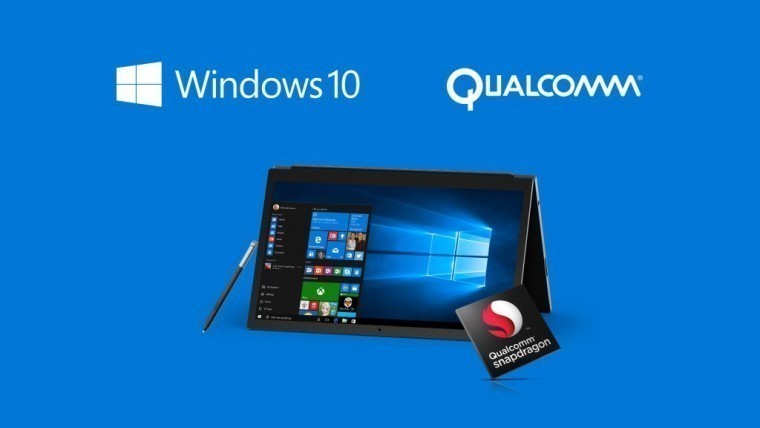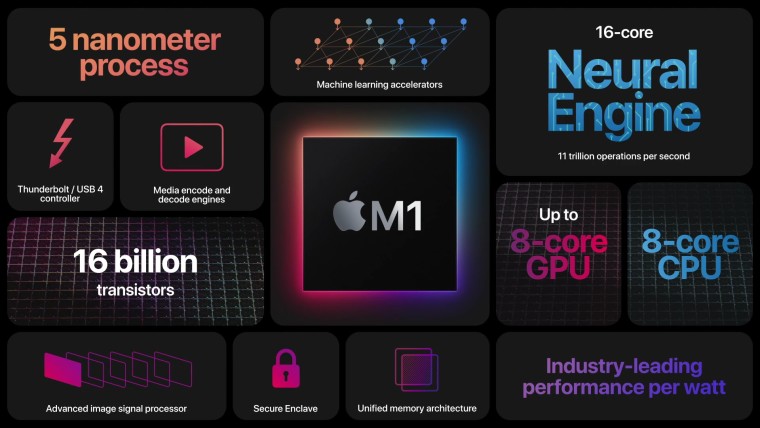
This year, Qualcomm's Snapdragon Technology Summit was held as a digital-only experience, thanks to the COVID-19 pandemic. Journalists like myself would rather be in Maui right now, as it's all the more depressing to look at my "on this day" memories from the last few years.
At this year's event, the firm introduced the Snapdragon 888, the chipset that will be included in next year's flagship Android phones. And that's it. There was no mention of Windows on ARM at all, and it's something that seems to have many bewildered. After all, Apple announced that it was transitioning its whole lineup to ARM earlier this year, and its custom M1 chip just hit the market in the MacBook Air, MacBook Pro, and Mac Mini.
According to early reviews, these new Macs are very good. Some users have even managed to install Windows on ARM on the new PCs, and benchmarks put Microsoft's own Surface Pro X to shame. With Apple's ARM success stories in the news, people were wondering how Qualcomm could simply ignore it, and why there was no PC chipset for Windows-based devices this year.
Qualcomm isn't ignoring it
Qualcomm isn't ignoring Apple's switch to ARM. In fact, it's said a few times that Apple's switch to ARM sort of legitimizes ARM PCs, reaffirming Qualcomm's idea that we don't need Intel to have a great PC experience.
I do understand the sentiment. Qualcomm has talked about Windows on ARM at Snapdragon Summit for the last four years, just like it talked up mixed reality last year. And in case you're wondering, it's not giving up on mixed reality either. It's just a shorter conference this year since it's not being held in-person. Day one is always a high-level vision keynote, day two is a deep dive on Qualcomm's flagship product (the smartphone chipset), and day three is anything else it wants to show off. There's just no day three this year.

Three months ago, Qualcomm introduced the Snapdragon 8cx Gen 2, its latest flagship PC chipset. It's a minor upgrade over the Snapdragon 8cx, only overclocking some components rather than using a new architecture. That's another thing that's concerning ARM enthusiasts. With Apple's powerful M1 being so good, they're wondering how Qualcomm can come back with a minor refresh.
Here's the deal though. The reason it was such a minor refresh was because Qualcomm is trying to shorten the amount of time between when it announces a product, and when it ships in a PC. The original Snapdragon 8cx was announced in December 2018 (Snapdragon Summit two years ago), and we didn't see it in an actual shipping product until February 2020 when Samsung's Galaxy Book S shipped. That is, unless you count the modified Snapdragon 8cx in Microsoft's Surface Pro X, which shipped a few months earlier.
To me, asking why there's no new flagship chipset being announced when there was a new one announced three months ago is an odd question to ask. As Qualcomm said this week, almost exhaustively, the number eight indicates that it's premium. The 'c' means compute, and the 'x' means extreme. There is nothing that will sit above the Snapdragon 8cx for PCs.
Windows is a different market
I recently reviewed Microsoft's latest Surface Pro X, and many commenters tried to compare it to Apple's new M1. Some asked why I hadn't mentioned the M1 in my review, and to be honest, the thought had never even crossed my mind. I don't think of the Surface Pro X and MacBook Air as similar products to where they should be compared in a review.

But if you're of a mindset that Qualcomm needs to compete with Apple Silicon, that's not necessarily true. Apple made a top-down decision to transition its entire lineup to ARM. That means that we're going to see Apple Silicon iMacs and more.
Qualcomm doesn't have the ability to make that type of decision for the Windows market. In fact, Microsoft doesn't even have that kind of power over its own market. Way too many Windows users rely on legacy components for a big switch like that to happen. No, for Qualcomm to gain any kind of dominance, it has to fight for every bit of market share it can in an effort to usurp Intel.
Qualcomm's strategy thus far has been thin and light ultrabooks. The unique value proposition to ARM has been thinner, fanless devices that get better battery life and don't compromise on cellular connectivity.
In 2016 at Snapdragon Summit, Qualcomm announced Windows on ARM and the plan to emulate x86 apps. At 2017's conference, the first Windows on ARM PCs debuted. At 2018's conference, Qualcomm introduced the very first chipset that was designed from the ground up for PCs, the Snapdragon 8cx. Last year, it announced the Snapdragon 7c and Snapdragon 8c chipsets.

These are meant to allow Qualcomm to expand its footprint into the budget segment. A Snapdragon 7c PC should cost just a few hundred dollars, and it can be fanless, have 4G LTE connectivity, and offer better battery life than competitors. This stuff is unheard of at that price point. With Intel-powered PCs, cellular connectivity is rare because it's an option, and it's an expensive option. So putting it in a PC that's worth a few hundred dollars doesn't happen. With the modem being integrated into the chipset, Qualcomm can offer a value proposition that can't be offered from Intel.
You see, once you start to explore the Windows market and what Qualcomm is doing to gain market share, it becomes less and less about how the flagship product compares with Apple's M1.
Qualcomm isn't doing desktops, at least for now
Two years ago when the Snapdragon 8cx was announced, anything seemed possible. First-gen Windows on ARM PCs that had a Snapdragon 835 were terrible, and the Snapdragon 850 was a big improvement. The Snapdragon 8cx was the third generation, and given the big performance improvements from generation to generation, it was clear that Qualcomm was laser-focused on taking on Intel.
One of the big questions on my mind was what Qualcomm was planning next, after its first "made for PCs" chipset (the previous ones were repurposed smartphone chipsets). I asked if we might see ARM chips for gaming laptops, or even for desktop PCs, and I got my answer: "Not in our wheelhouse."
Qualcomm's focus remains on thin and light devices, where it can deliver value on battery life, connectivity, and the fanless design. None of those translate to desktop processors in any way at all. Thermals do matter when it comes to a desktop, but only because thermals affect the only thing that maters on a desktop: performance.

Apple is going to make an ARM desktop processor. It promised to transition its entire lineup over two years, and in a decade, you can bet that macOS won't even support Intel processors anymore. The M1 is just the beginning for the Cupertino firm. If you think that's powerful, just wait until they announce the chip that will go into the iMac or Mac Pro.
Don't expect Qualcomm to compete with this in the foreseeable future. The company is playing to its strengths right now, and trying to gain bits of the market in areas where it can. Again, things might be different if Microsoft could somehow make a top-down decision that all PCs going forward would have ARM64 processors, but it can't.
Don't forget about Chrome OS
About two and a half months ago, Acer announced the Chromebook Spin 513, a Chrome OS convertible that's powered by a Snapdragon 7c. Qualcomm's compute initiative is a few years old now, but this is the first time that any Snapdragon processor has shown up in a Chromebook.

The point is, next time you think Qualcomm is ready to throw in the towel on compute because of something that's going on with Windows, and how it compares to macOS, don't forget about Chrome OS. As of a few months ago, that's part of compute too.
And it seems as though the Snapdragon 7c and Chrome OS were made for each other. There have been plenty of ARM-powered Chromebooks in the past, so there aren't any compatibility issues, and Android apps run just fine on Snapdragon chips, obviously. Add cellular to the mix on a browser-based operating system, and it looks pretty good.
Chrome OS is also a very light operating system, needing fewer resources than Windows or macOS. Comparing any silicon on a Chromebook to Apple's M1 on a MacBook is like comparing apples to, well, Apples.
Qualcomm still needs to step it up
The main purpose of this article is to point out a few facts that people seem to have forgotten. Qualcomm hasn't give up on compute, it will have a new, more powerful processor next year, and comparing Qualcomm's processors to Apple's M1 isn't completely fair.
But I'm not apologizing for Qualcomm, because it does still need to step up its game. I wrote about this back in May, on the heels of yet another rumor that Apple was switching to ARM. I correctly predicted that Apple was going to transition its entire lineup, just just super thin and light devices.

In the Windows world, ARM PCs are positioned almost like they're not real PCs. I remember when the first Windows on ARM PCs shipped; tablets like HP's Envy x2 also had an Intel variant. HP told me at the time that you get the Intel one if you want a PC-like experience, and you get the ARM one if you want an iPad-like experience.
It's time to actually make a powerful chipset that can be positioned as such. Even Apple's iPad Pro tablets are now positioned as devices that you can easily edit video on. Qualcomm needs to think along those lines too.
Looking back at my editorial from May though, I did say that Microsoft and Qualcomm will be able to learn from how Apple implements ARM, not that they would be prepared for it ahead of time. And I have no doubt that Qualcomm is taking notes not just on what Apple is doing, but on how the public is responding to it.
















40 Comments - Add comment